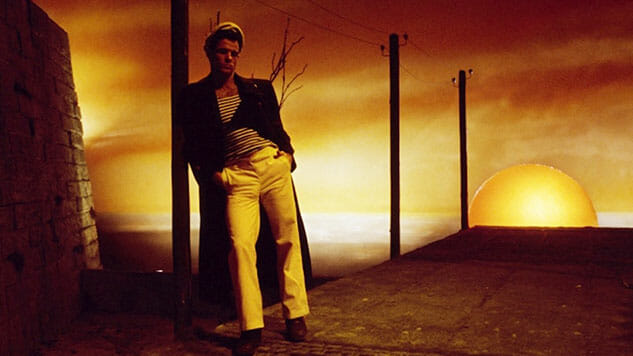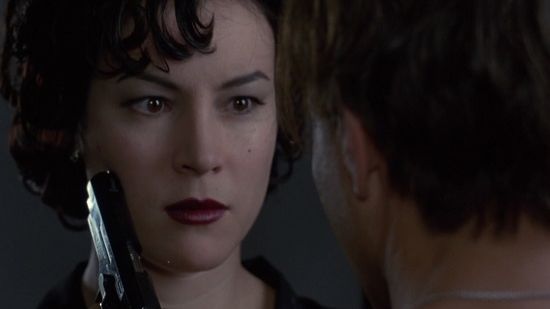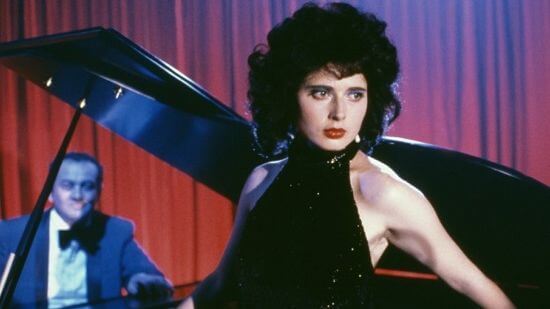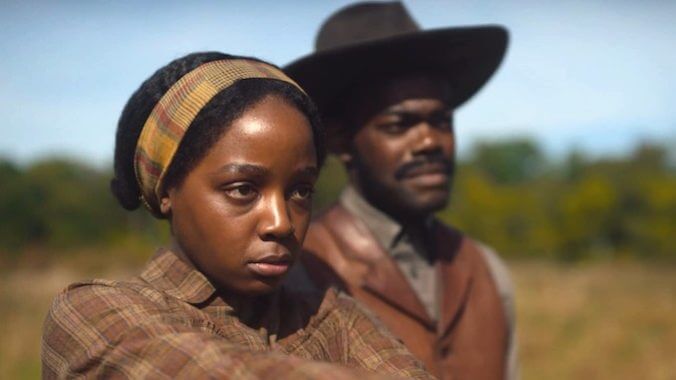
Each month, Paste brings you a look at the best new selections from the Criterion Collection. Much beloved by casual fans and cinephiles alike, Criterion has presented special editions of important classic and contemporary films for over three decades. You can explore the complete collection here.
In the meantime, because chances are you may be looking for something, anything, to discover, find all of our Criterion picks here, and if you’d rather dig into things on the streaming side (because who’s got the money to invest in all these beautiful physical editions?) we’ve got our list of the best films on the Criterion Channel. But you’re here for what’s new, and we’ve got you covered.
Here are all the new releases from Criterion, June 2024:
Fear and Loathing in Las Vegas
Year: 1998
Director: Terry Gilliam
Stars: Johnny Depp, Benicio del Toro
Rating: R
Runtime: 118 minutes

Terry Gilliam’s Fear and Loathing in Las Vegas was harshly criticized upon its release: It was dubbed too incoherent, without enough character development, too indulgent in its sickening display of excess—though critics had to concede that it was surprisingly faithful adaptation of Hunter S. Thompson’s novel of the same name. So for those fans of Thompson’s writing, Fear and Loathing feels right—how else to capture the hallucinatory nightmare of the original work? Gilliam and his collaborators create a staggeringly baroque vision of Las Vegas able to easily induce in any viewer the feeling that he or she has been huffing some of the same detrimental vapors inhaled onscreen. Johnny Depp and Benicio del Toro are appropriately unhinged as Raoul Duke and his attorney Dr. Gonzo, respectively, and other recognizable faces (Cameron Diaz, Flea, Gary Busey) flit in and out of the film as if in a dream. It may be an incoherent mess, but it’s a one-of-a-kind mess, capturing the seductive incoherency at the heart of its source material. —Maura McAndrew
Querelle
Year: 1982
Director: Rainer Werner Fassbinder
Stars: Brad Davis, Franco Nero, Jeanne Moreau, Laurent Malet, Hanno Pöschl
Rating: R
Runtime: 108 minutes

It is difficult to tell who is most desperate in Querelle, Fassbinder’s final film, based on Jean Genet’s novella Querelle de Brest, whose hypnotic and nonsensical plot follows a murderous thief and the object of everyone’s desire, Querelle (Brad Davis), his arrival in Brest, and the separate murders he and another worker commit on a boat. Of the desperate, there is the sailor Querelle, of the ship Le Vengeur, which docks in the city of Brest. There are the men around him: Nono (Günther Kaufmann), the owner of the bar/brothel in Brest who fucks Querelle after winning a game of dice against him, and whose wife, Lysiane (Jeanne Moreau), is the bar’s lounge singer; Gil (Hanno Pöschl), a construction worker who murders another man; Roger (Laurent Malet), a man on the ship in love with Gil; Lieutenant Seblon (Franco Nero), also in love with Querelle, and prone to ruminating on his desire for the strapping sea-hunk; and Querelle’s brother, Robert (also played by Pöschl), with whom Querelle has an intense love/hate relationship. Querelle’s desperation comes from an unspoken sense of claustrophobia: It would be easy to embrace annihilation on a small boat, with nowhere to really go but inside himself. The murder he commits feels more like a performance, artificial and unconvincing as an argument regarding his masculinity. The flatly affected performances of the cast imply a strain to divorce themselves from any type of vulnerability, as well as a wink and nod to acting in gay porn. (I suspect that Yorgos Lanthimos may have seen this.) Fassbinder’s film posits the epitome of queer male beauty as aggressive and violent, a persona that poses in lurid lighting, images reminiscent of something out of a James Bidgood or Tom of Finland piece. Ironically, Querelle’s beguiling musculature is costumery. It isn’t just Brad Davis’s chest of hair that makes him beautiful, but the way sweat shines on his face; he is unfathomably masculine and yet his expression is able to play doubt to fulfill a fantasy. Moreau, dressed in a black lacy nightgown, casually sings, as if it is a given, “Each man kills the thing he loves.”—Kyle Turner
Bound
Year: 1996
Director: Lilly and Lana Wachowski
Stars: Jennifer Tilly, Gina Gershon, Joe Pantoliano, John Ryan
Rating: R
Runtime: 108 minutes

Before The Matrix launched them into blockbuster superstardom, Lilly and Lana Wachowski announced their arrival with this sleek, sexy neo-noir. The film centers on Corky, a female ex-con who ends up falling into a sexual relationship with her next-door neighbor, Violet. The two promptly hatch a plan to run off together after stealing money from Violet’s mafia-affiliated husband. Predictably, this seemingly straightforward plan goes dangerously awry. There’s much to love about Bound—from Gina Gershon’s and Jennifer Tilly’s career-defining performances to Bill Pope’s stylish cinematography to the progressive portrayal of a lesbian relationship. In the end, however, Bound delights because, well, it’s just so darn entertaining. Its success provides all the more evidence that, in the wake of Jupiter Ascending, the Wachowskis might do well to get back to their low-budget roots. —M.R.
Victims of Sin
Year: 1951
Director: Emilio Fernández
Stars: Ninón Sevilla, Rodolfo Acosta, Tito Junco, Rita Montaner
Rating: NR
Runtime: 90 minutes
If you’re unfamiliar with the rumbera film, the subgenre from the Mexican Golden Age of the ’40s and ’50s that spanned musical, melodrama and noir, there’s no better entry point than Victims of Sin. Filled with fallen women (egad!) and sensual dance moves (double egad!), the rumberas allowed the changing social moods of Mexico to play out on screen in the relative comforts of a conservative framework. Sex workers had sex, they flaunted their bodies, they expressed themselves, they were punished. That could mean death, jail or another form of suffering, but comeuppance came for them as surely as if the Hays Code was dictating it. But inside of this structure, especially in a more rebellious and lively film like Emilio Fernández’s Victims of Sin, these embodiments of feminism fought back. They banded together. They thrived and enjoyed themselves, making their own money and their own choices. Here, the bright bastion of female resistance and autonomy is played by the firecracker dancer-actor Ninón Sevilla. Leaping as confidently between lovey-dovey fawning and violent outbursts as she hops around the dance floor in her massive heels, Sevilla is a terrific ball of energy. Her sexy rumbas and mambos see her flexing toned abs, flipping up a feathery dress, and flipping the script on her male cohorts. Despite the film’s conventionally tragic plot (undone at the last minute as it tumbles to its dramatic conclusion), Sevilla’s character goes after what she wants — whether that’s the man she dances with, or a found-family motherhood she claims for herself. This beam-bright performance is juxtaposed with Gabriel Figueroa’s starkly lit frames and the vividly realized nightclubs in which the film takes place. The result is a light piercing the train-smoke of Mexico City’s underbelly, the noirish film’s femme fatale juiced up and given a new instrument thanks to a few fantastic musical moments.—Jacob Oller
Blue Velvet
Year: 1986
Directors: David Lynch
Stars: Kyle MacLachlan, Isabella Rossellini, Dennis Hopper
Rating: R
Runtime: 120 minutes

Blue Velvet represents everything cinema can be: horrific, hilarious, reality heightened to inexplicable, nearly intolerable heavens. This is storytelling as symbology, traditional American genres like noir and the thriller picked apart with unsettling aplomb. For example, take the noir part of this equation: Lynch concocts an oedipal circumstance out of Kyle MacLachlan’s innocent boy and Dennis Hopper’s evil “daddy,” with Isabella Rossellini’s sexy “mommy” persona both an unobtainable feminine figure and a sweet presence that must be protected. As adorable everyman Jeffrey Beaumont (MacLachlan) is seduced ever deeper into the disgusting underground of American domesticity (represented by a series of insectoid images, the denizens of our creepy crawly underworld), his outlook is light, and psychopathic Frank Booth’s (Hopper) is dark—in fact, Frank comments on this. Of course, he’s talking literally about the illumination of the room, but he also huffs helium and calls himself Van Gogh, so every gesture, every sideways word should be taken with a grain of salt. Or fertilizer. And so, in black and white, Lynch finds blue: There is something deeply sad about the kind of normal, everyday stuff Lynch fixates upon, and in Blue Velvet that sadness is, whether we like it or not, the closest a film in the 1980s ever got to realizing the American Dream. —D.S.
The Underground Railroad
Year: 2021
Created by/Director: Barry Jenkins
Stars: Thuso Mbedu, Chase W. Dillon, Joel Edgerton, Aaron Pierre, William Jackson Harper

This 10-episode limited series, based on Colson Whitehead’s novel, is a fictional account of two runaway slaves, Cora (Thuso Mbedu) and her partner Caesar (Aaron Pierre), as they traverse the American South via a connection of literal hidden railroads. Helmed by Barry Jenkins, the series is lush and atmospheric while never shying away from the atrocities Cora and Caesar are running from, most notably the persistent slave catcher Ridgeway (Joel Edgerton), who stalks the duo relentlessly. Each episode plays like a chapter in their journey, one stop on the railroad at a time, and Jenkins is deliberate in his worldbuilding. Georgia and South Carolina and North Carolina feel like different countries with different rules for how to treat Black folk: slaves in one, members of society in another, and illegal to exist in the open in the last. Jenkins fills every location with its own flavors. The first time we see the railroad, it feels like a huge sigh of relief—a literal bright light at the end of the tunnel. It’s easy for a slavery drama to feel suffocating or paralyzing, and there are parts of The Underground Railroad that are designed to evoke discomfort and stagnancy. But Jenkins’ composition also allows us to examine every side of the story, every perspective at play. The series is urgent even in its slower moments. There is a thudding heartbeat at the center, proving that despite the trauma at the core of the story, the series is about perseverance. And in it is a tale ready to be deemed a classic. —Radhika Menon